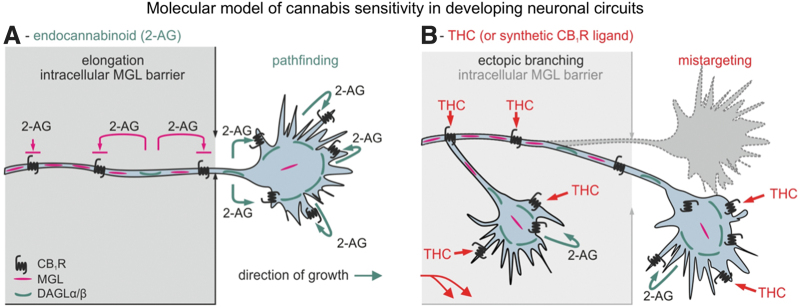FIG. 4.
Hypothetical model of THC-induced neuronal wiring defects. (A) During axonal development, MGL forms an intracellular enzymatic barrier to prevent 2-AG-driven activation of the CB1 receptor transported along the primordial axon. Thus, we recognize MGL as an enzymatic checkpoint to control 2-AG-dependent morphogenesis and neurite outgrowth. A decrementing MAGL gradient toward the motile growth cone allows 2-AG to activate CB1 receptors, thus impacting growth cone steering decisions. (B) Prenatal exposure to THC (or other cannabinomimetics) can override this endogenous mechanism since these ligands are not substrates of MGL. Thus, THC can prematurely engage CB1 receptors en route to their signaling positions and induce errant second messenger signaling. This can modify neuronal morphology and connectivity. Reproduced from Keimpema et al.15 2-AG, 2-arachidonoyl-glycerol; MGL, monoacylglycerol lipase.

